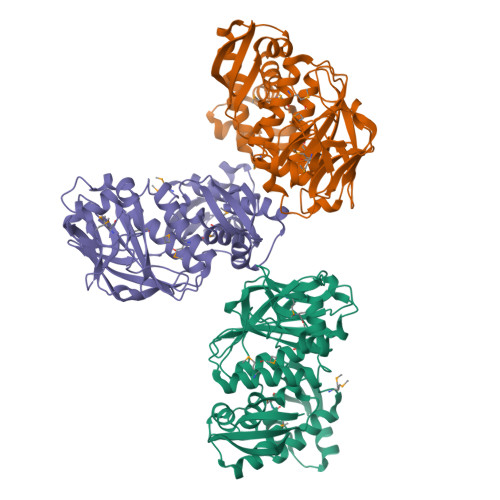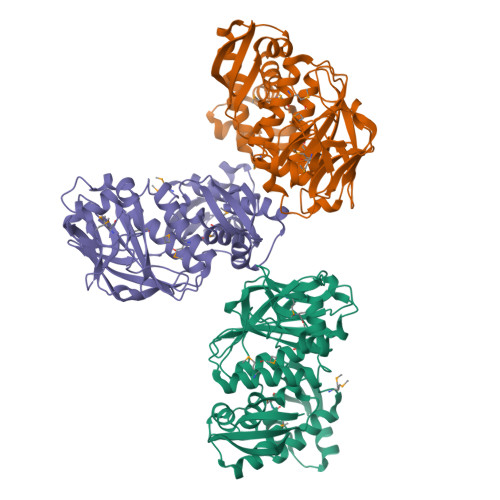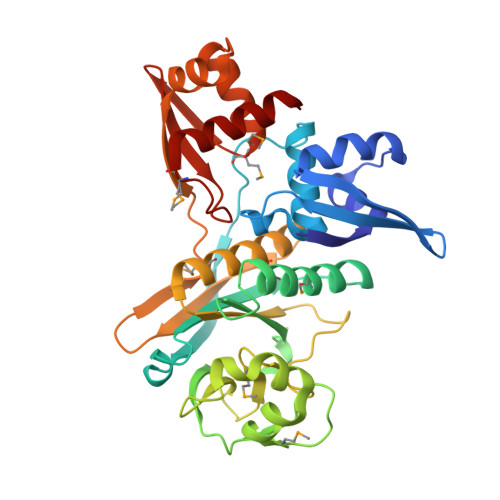Structural and mutational studies of the amino acid-editing domain from archaeal/eukaryal phenylalanyl-tRNA synthetase
Sasaki, H.M., Sekine, S., Sengoku, T., Fukunaga, R., Hattori, M., Utsunomiya, Y., Kuroishi, C., Kuramitsu, S., Shirouzu, M., Yokoyama, S.(2006) Proc Natl Acad Sci U S A 103: 14744-14749
- PubMed: 17003130
- DOI: https://doi.org/10.1073/pnas.0603182103
- Primary Citation of Related Structures:
2CXI - PubMed Abstract:
To achieve accurate aminoacylation of tRNAs with their cognate amino acids, errors in aminoacylation are corrected by the "editing" mechanism in several aminoacyl-tRNA synthetases. Phenylalanyl-tRNA synthetase (PheRS) hydrolyzes, or edits, misformed tyrosyl-tRNA with its editing domain in the beta subunit. We report the crystal structure of an N-terminal fragment of the PheRS beta subunit (PheRS-beta(N)) from the archaeon, Pyrococcus horikoshii, at 1.94-A resolution. PheRS-beta(N) includes the editing domain B3/4, which has archaea/eukarya-specific insertions/deletions and adopts a different orientation relative to other domains, as compared with that of bacterial PheRS. Surprisingly, most residues constituting the editing active-site pocket were substituted between the archaeal/eukaryal and bacterial PheRSs. We prepared Ala-substituted mutants of P. horikoshii PheRS for 16 editing-pocket residues, of which 12 are archaea/eukarya-specific and four are more widely conserved. On the basis of their activities, Tyr-adenosine was modeled on the B3/4-domain structure. First, the mutations of Leu-202, Ser-211, Asp-234, and Thr-236 made the PheRS incorrectly hydrolyze the cognate Phe-tRNA(Phe), indicating that these residues participate in the Tyr hydroxy group recognition and are responsible for discrimination against Phe. Second, the mutations of Leu-168 and Arg-223, which could interact with the tRNA 3'-terminal adenosine, reduced Tyr-tRNA(Phe) deacylation activity. Third, the mutations of archaea/eukarya-specific Gln-126, Glu-127, Arg-137, and Asn-217, which are proximal to the ester bond to be cleaved, also reduced Tyr-tRNA(Phe) deacylation activity. In particular, the replacement of Asn-217 abolished the activity, revealing its absolute requirement for the catalysis.
Organizational Affiliation:
Department of Biophysics and Biochemistry, Graduate School of Science, University of Tokyo, 7-3-1 Hongo, Bunkyo, Tokyo 113-0033, Japan.

















